

Santolina is a Mediterranean plant with silvery evergreen leafage.
Key Santolina facts:
Name – Santolina
Family – Asteraceae
Type – shrub, sub-shrub
Height – 20 to 24 inches (50 to 60 cm)
Exposure – sunny
Soil: ordinary – Foliage: evergreen – Flowering: early summer
Sometimes called cotton lavender, its blooming is worthwhile, too.
Santolina be grown in rocky, dry soil that is poor and arid, and it can also be grown in pots, garden boxes or containers to decorate a patio, deck or balcony.
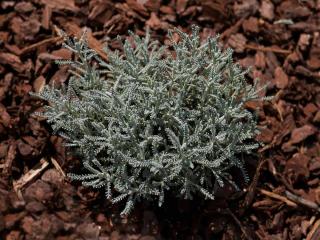 Plant preferably in fall, but planting in spring is also possible.
Plant preferably in fall, but planting in spring is also possible.Santolina demands minimal care and maintenance, it is a plant that is very easy to grow.
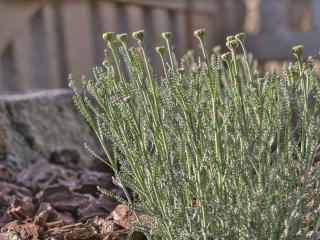
Santolina, like lavender and rosemary, can grow woody, sparse and leggy in time. It’s possible to rejuvenate your cotton lavender in less than half an hour’s work.
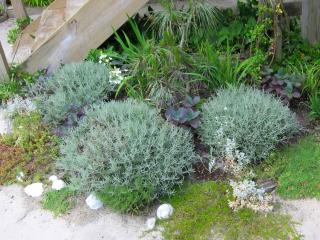
Generally, cut all “dying back” branches back to the trunk or to the nearest junction to a healthier branch. This portion of the pruning you can perform any time in spring, summer or fall. In winter, it’s sometimes harder to tell whether a branch is vigorous or not.
Second, after removing dead and dying wood, wait for fall. That’s the best time to perform “maintenance pruning”: shorten the greenery by half to trigger branching out more flowers in the following spring.
Often used to landscape rocky ground, decorate edges or the sides of alleyways, santolina offers us beautiful summer blooming.
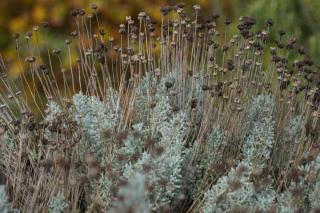
This sub-shrub is melliferous, particularly pleasing to bees, and it is easy to grow and only requires minimal care.
Its flower appears in summer and is humble but very interesting, especially if you want to prepare beautiful dried flower bouquets.
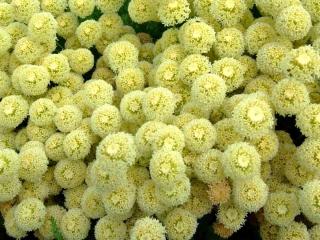
There are quite a few varieties to chose from nowadays:
It has medicinal uses, too: oil produced from the plant is used as a de-worming agent, and the flower is drunk in the form of herbal tea for its stimulating properties.
Read also:
Santolina naturally repels clothing moths, it is quite effective if you prepare small bouquets, dry them, and then store them with your clothes in the drawers. In lavender wands, you use only the flower, but for santolina leaves and branches work well, too.
it’s only June but my santolina, I suspect through lack of proper pruning has become very leggy and untidy. Do I have to wait until autumn before I cut it back?
Well, you can deadhead already as soon as the flowers are wilted away – just cut them back to the stem where it emerged from.
Dead wood: you can identify in your woody santolina a few of the older branches. Typically, they’re either “on the rise” or “dying back”. Those that are “on the rise” have a lot more growth at their tips and ends, and bore more flowers. Those that are “dying back” are either completely dead already or have more dead portions, scraggly growth, and corky bark.
Generally, you’d cut the “dying back” branches back to the trunk or to the nearest junction to a healthier branch. This portion of the pruning you can perform any time, so go ahead and do it during your next round through the garden.
Once that’s done, best wait for fall to get the “maintenance pruning” done: shorten all the greenery by half, this will lead to more branching out and produces more flowers next spring.
If it’s really woody, you can go ahead and try the same techniques you’d use to deal with old woody lavender, the “regular” species. It includes hard pruning and then maintenance pruning.